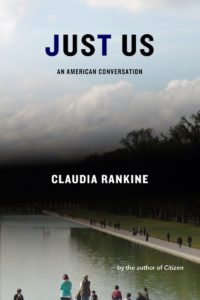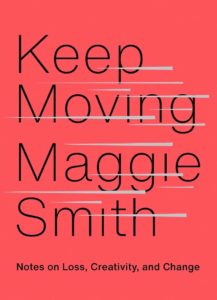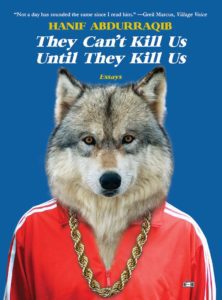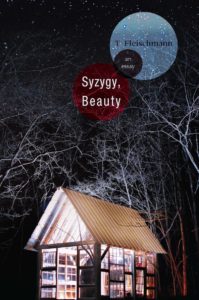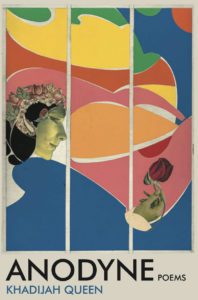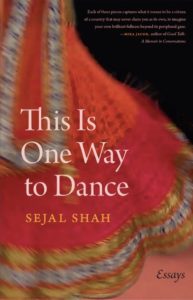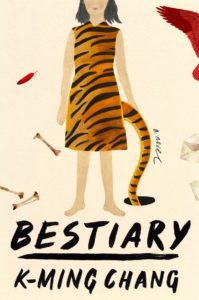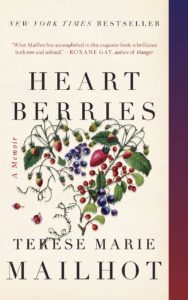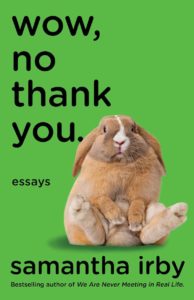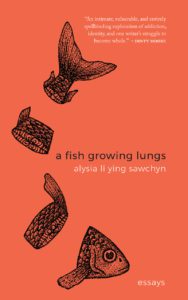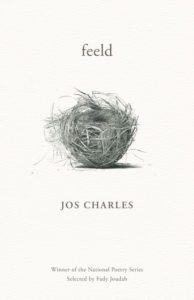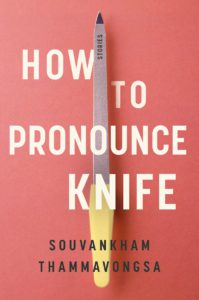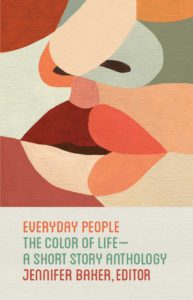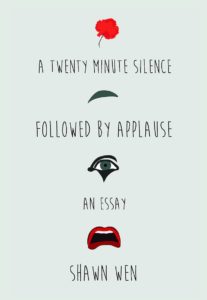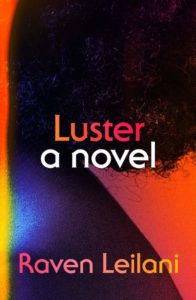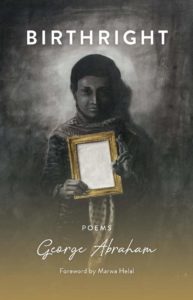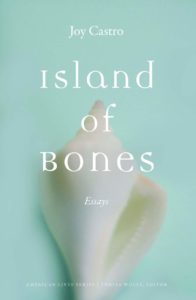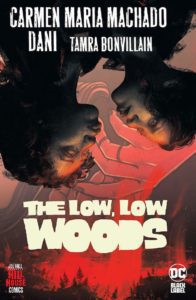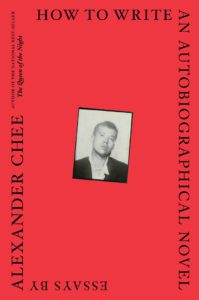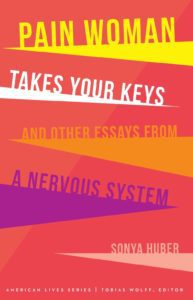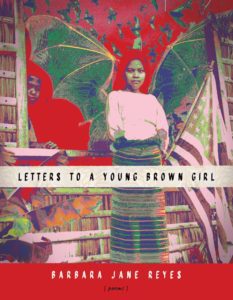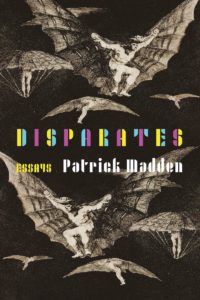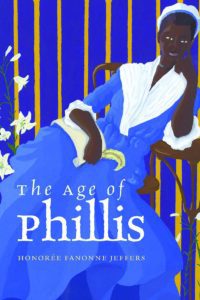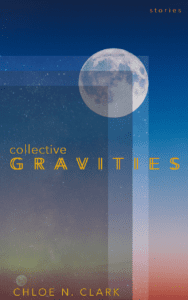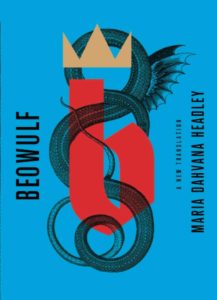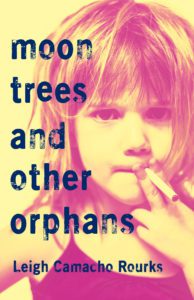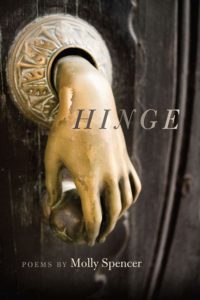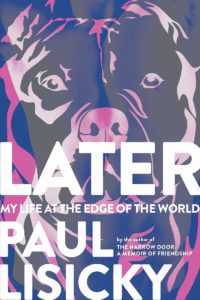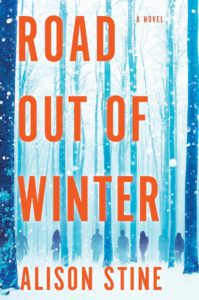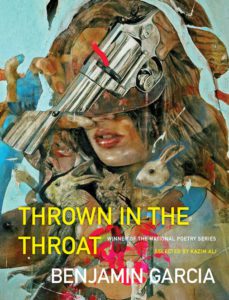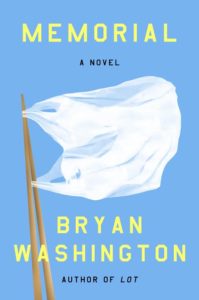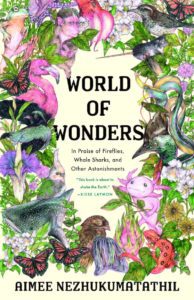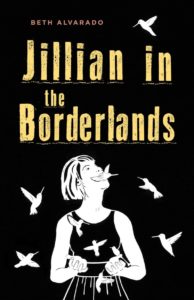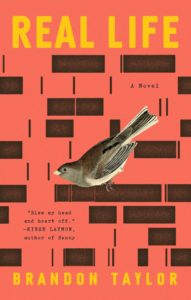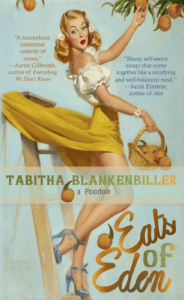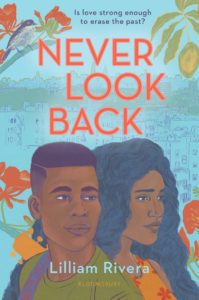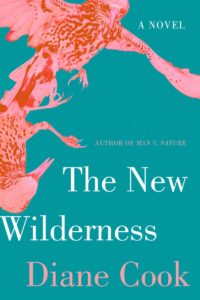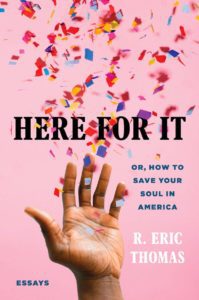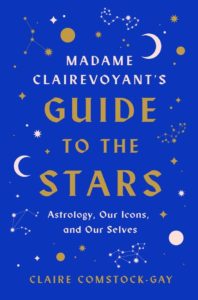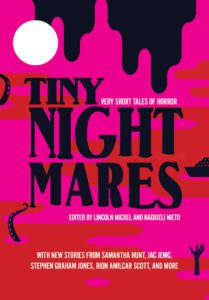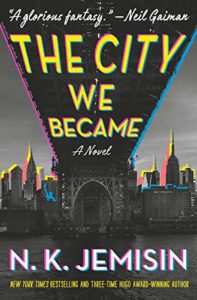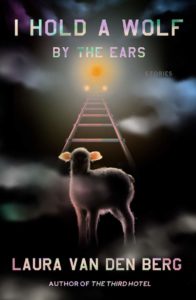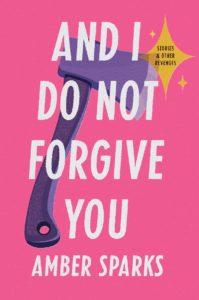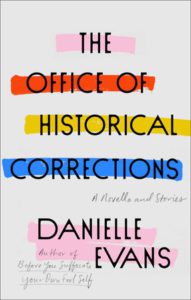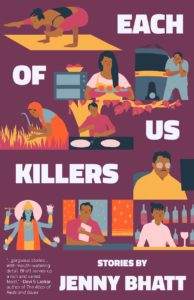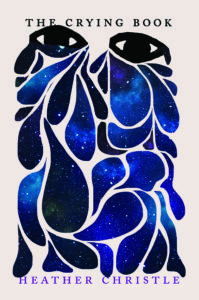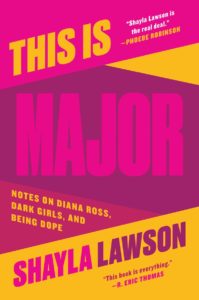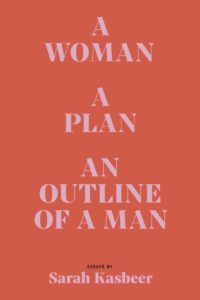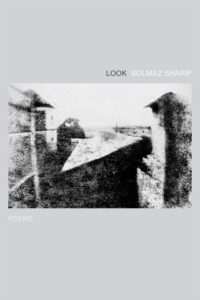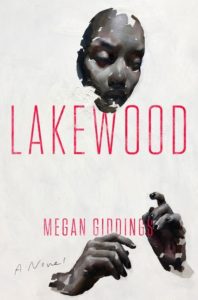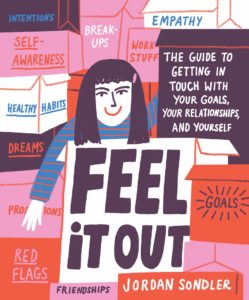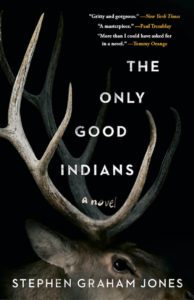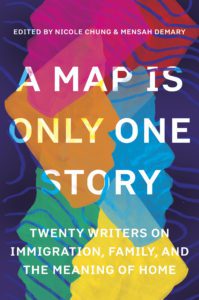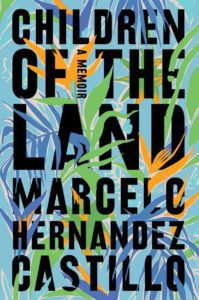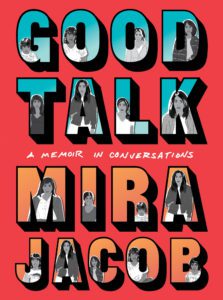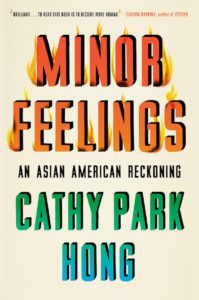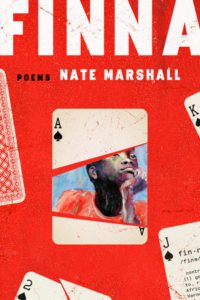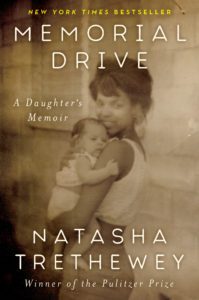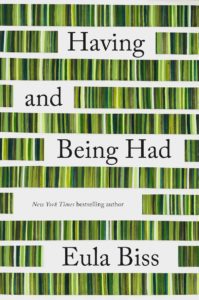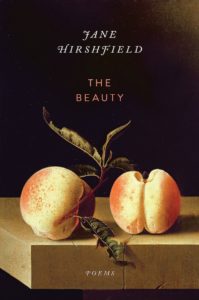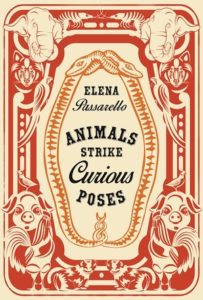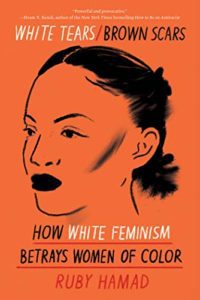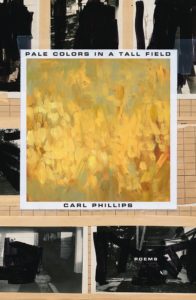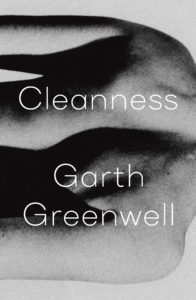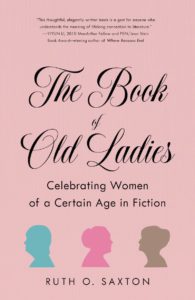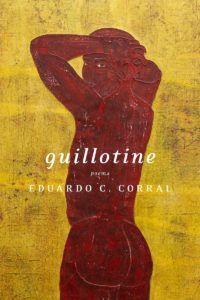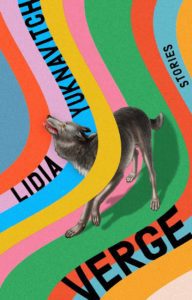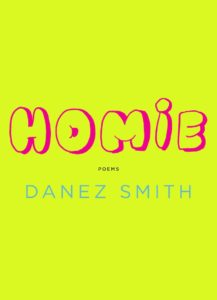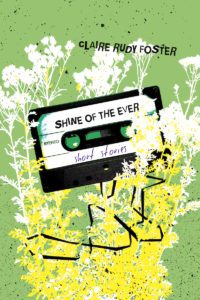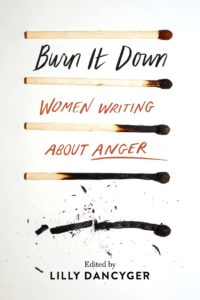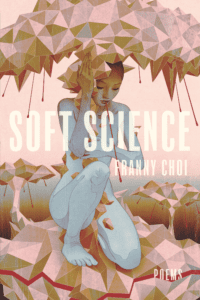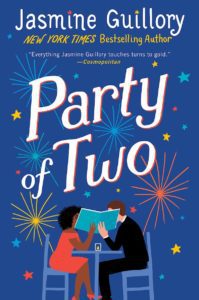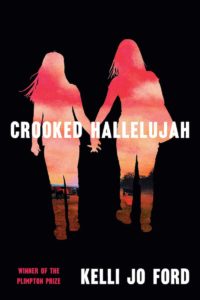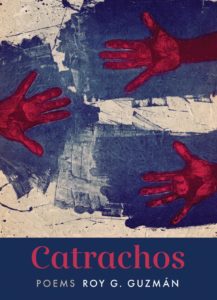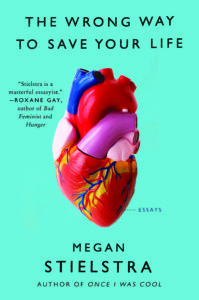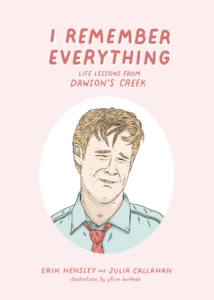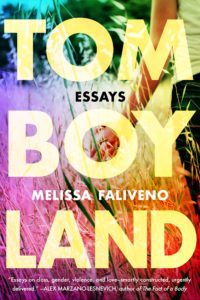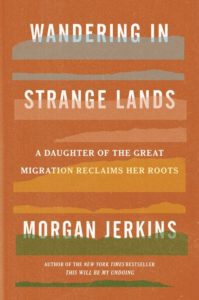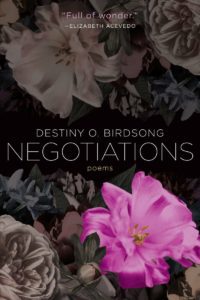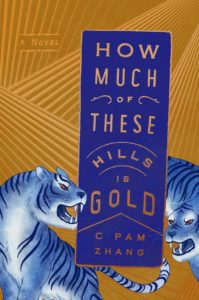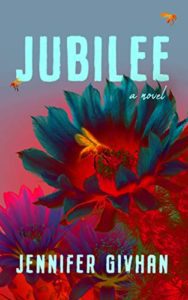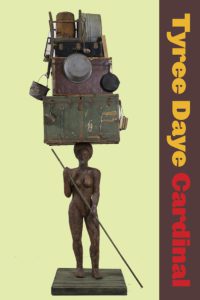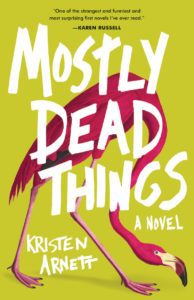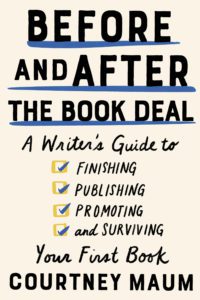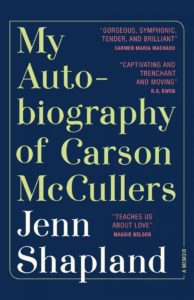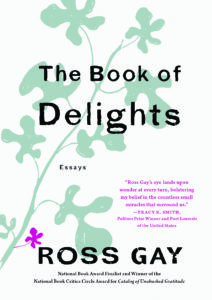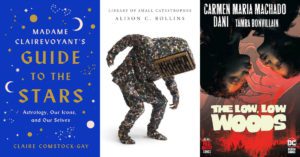
’Tis the season to be gifting! We’ve asked our editors to give us their favorite books to gift to friends and family—from recent 2020 releases to longtime literary loves. From books to keep us company on cold winter nights to books that challenge us to think beyond our own experiences, this list is sure to have something for every reader on your holiday shopping list.
And, thrill readers on your holiday shopping list with a Rumpus gift subscription—we have 6-month subscriptions to our incredible Book Club, and 6-month subscriptions to the equally awesome Poetry Book Club! We also offer 6-month holiday gift subscriptions to Letters in the Mail! All subscriptions come with a PDF you can print out and slip under the tree, so these also make a great last-minute gift. Give a gift that keeps on giving throughout the year, then package it up with one or two of the terrific selections below!
***
Just Us by Claudia Rankine
As everyday white supremacy becomes increasingly vocalized with no clear answers at hand, how best might we approach one another? Claudia Rankine, without telling us what to do, urges us to begin the discussions that might open pathways through this divisive and stuck moment in American history. Just Us is an invitation to discover what it takes to stay in the room together, even and especially in breaching the silence, guilt, and violence that follow direct addresses of whiteness. Rankine’s questions disrupt the false comfort of our culture’s liminal and private spaces―the airport, the theater, the dinner party, the voting booth―where neutrality and politeness live on the surface of differing commitments, beliefs, and prejudices as our public and private lives intersect.
Keep Moving: Notes on Loss, Creativity, and Change by Maggie Smith
When Maggie Smith, the award-winning author of the viral poem “Good Bones,” started writing daily Twitter posts in the wake of her divorce, they unexpectedly caught fire. In this deeply moving book of quotes and essays, Maggie writes about new beginnings as opportunities for transformation. Like kintsugi, the Japanese art of mending broken ceramics with gold, Keep Moving celebrates the beauty and strength on the other side of loss. This is a book for anyone who has gone through a difficult time and is wondering: What comes next?
They Can’t Kill Us Until They Kill Us by Hanif Abdurraqib
In an age of confusion, fear, and loss, Hanif Abdurraqib’s is a voice that matters. Whether he’s attending a Bruce Springsteen concert the day after visiting Michael Brown’s grave, or discussing public displays of affection at a Carly Rae Jepsen show, he writes with a poignancy and magnetism that resonates profoundly. In the wake of the nightclub attacks in Paris, he recalls how he sought refuge as a teenager in music, at shows, and wonders whether the next generation of young Muslims will not be afforded that opportunity now. While discussing the everyday threat to the lives of black Americans, Abdurraqib recounts the first time he was ordered to the ground by police officers: for attempting to enter his own car. In essays that have been published by the New York Times, MTV, and Pitchfork, among others―along with original, previously unreleased essays―Abdurraqib uses music and culture as a lens through which to view our world, so that we might better understand ourselves, and in so doing proves himself a bellwether for our times.
Syzygy, Beauty: An Essay by T Fleischmann
In Syzygy, Beauty, T Fleischmann builds an essay of prose blocks, weaving together observations on art, the narrator’s construction of a house, and a direct address to a lover. Playing with scale and repetition, we are kept off-center, and therefore always looking, as the speaker leads us through an intimate relationship that is complicated and deepened by multiple partners, gender transitions, and itinerancy.
Anodyne by Khadijah Queen
The poems that make up Anodyne consider the small moments that enrapture us alongside the daily threats of cataclysm. Formally dynamic and searingly personal, Anodyne asks us to recognize the echoes of history that litter the landscape of our bodies as we navigate a complex terrain of survival and longing. With an intimate and multivocal dexterity, these poems acknowledge the simultaneous existence of joy and devastation, knowledge and ignorance, grief and love, endurance and failure―all of the contrast and serendipity that comes with the experience of being human. If the body is a world, or a metaphor for the world, for what disappears and what remains, for what we feel and what we cover up, then how do we balance fate and choice, pleasure and pain? Through a combination of formal lyrics, delicate experiments, sharp rants, musical litany, and moments of wit that uplift and unsettle, Queen’s poems show us the terrible consequences and stunning miracles of how we choose to live.
This Is One Way to Dance: Essays by Sejal Shah
In the linked essays that make up her debut collection, Sejal Shah explores culture, language, family, and place. Throughout, Shah reflects on what it means to make oneself visible and legible through writing in a country that struggles with race and maps her identity as an American, South Asian American, writer of color, and feminist. Shah invites us to consider writing as a somatic practice, a composition of digressions, repetitions―movement as transformation, incantation. Her essays―some narrative, others lyrical and poetic―explore how we are all marked by culture, gender, and race; by the limits of our bodies, by our losses and regrets, by who and what we love, by our ambivalences, and by trauma and silence. Language fractures in its attempt to be spoken. Shah asks and attempts to answer the question: How do you move in such a way that loss does not limit you?
Bestiary by K-Ming Chang
One evening, Mother tells Daughter a story about a tiger spirit who lived in a woman’s body. She was called Hu Gu Po, and she hungered to eat children, especially their toes. Soon afterwards, Daughter awakes with a tiger tail. And more mysterious events follow: Holes in the backyard spit up letters penned by her grandmother; a visiting aunt arrives with snakes in her belly; a brother tests the possibility of flight. All the while, Daughter is falling for Ben, a neighborhood girl with mysterious powers of her own. As the two young lovers translate the grandmother’s letters, Daughter begins to understand that each woman in her family embodies a myth—and that she will have to bring her family’s secrets to light in order to change their destiny.
Library of Small Catastrophes by Alison C. Rollins
With a nod to Borges’s fascination with libraries, this ambitious first collection by Alison C. Rollins—a librarian herself—archives the grist and grind of life with marvelous linguistic agility and philosophical sapience. “Memory is about the future, not the past,” she reminds, and offers poems as maps: counting teeth and time, marking punctuation and punishment, and remembering disappeared histories. Inside her indexed precision, Rollins leaves plenty of room for wilderness—the leaking body, the music of tragedy, the personal lament—cataloguing love and loss on an existential scale.
Heart Berries by Terese Marie Mailhot
Heart Berries is a powerful, poetic memoir of a woman’s coming of age on the Seabird Island Indian Reservation in the Pacific Northwest. Having survived a profoundly dysfunctional upbringing only to find herself hospitalized and facing a dual diagnosis of PTSD and Bipolar II; Terese Marie Mailhot is given a notebook and begins to write her way out of trauma. The triumphant result is Heart Berries, a memorial for Mailhot’s mother, a social worker and activist who had a thing for prisoners; a story of reconciliation with her father—an abusive drunk and a brilliant artist—who was murdered under mysterious circumstances; and an elegy on how difficult it is to love someone while dragging the long shadows of shame.
Wow, No Thank You by Samantha Irby
Irby is forty, and increasingly uncomfortable in her own skin despite what Inspirational Instagram Infographics have promised her. She has left her job as a receptionist at a veterinary clinic, has published successful books and has been friendzoned by Hollywood, left Chicago, and moved into a house with a garden that requires repairs and know-how with her wife in a blue town in the middle of a red state where she now hosts book clubs and makes mason jar salads. This is the bourgeois life of a Hallmark Channel dream. She goes on bad dates with new friends, spends weeks in Los Angeles taking meetings with “TV executives slash amateur astrologers” while being a “cheese fry-eating slightly damp Midwest person,” “with neck pain and no cartilage in [her] knees,” who still hides past-due bills under her pillow.
A Fish Growing Lungs by Alysia Li Ying Sawchyn
At age eighteen Alysia Sawchyn was diagnosed with bipolar I. Seven years later she learned she had been misdiagnosed. A Fish Growing Lungs takes the form of linked essays that reflect on Sawchyn’s diagnosis and its unraveling, the process of withdrawal and recovery, and the search for identity as she emerges from a difficult past into a cautiously hopeful present. Sawchyn captures the precariousness of life under the watchful eye of doctors, friends, and family, in which saying or doing the wrong thing could lead to involuntary confinement. This scrutiny is compounded by the stigmas of mental illness and the societal expectations placed on the bodies of women and women of color. And yet, amid juggling medications, doubting her diagnosis, and struggling with addiction and cutting, there is also joy, friendship, love, and Slayer concerts. Drawing from life experience, literature, music, medical journals, films, and recovery communities, each essay illuminates the richness of self-knowledge that comes from the act of writing itself.
feeld by Jos Charles
In feeld, Charles stakes her claim on the language available to speak about trans experience, reckoning with the narratives that have come before by reclaiming the language of the past. In Charles’s electrifying transliteration of English―Chaucerian in affect, but revolutionary in effect―what is old is made new again. The world of feeld is our own, but off-kilter, distinctly queer―making visible what was formerly and forcefully hidden: trauma, liberation, strength, and joy.
How to Pronounce Knife by Souvankham Thammavongsa
A failed boxer painting nails at the local salon. A woman plucking feathers at a chicken processing plant. A housewife learning English from daytime soap operas. A mother teaching her daughter the art of worm harvesting. In her stunning debut story collection, O. Henry Award winner Souvankham Thammavongsa focuses on characters struggling to make a living, illuminating their hopes, disappointments, love affairs, acts of defiance, and above all their pursuit of a place to belong. In spare, intimate prose charged with emotional power and a sly wit, she paints an indelible portrait of watchful children, wounded men, and restless women caught between cultures, languages, and values. As one of Thammavongsa’s characters says, “All we wanted was to live.” And in these stories, they do—brightly, ferociously, unforgettably.
Everyday People: The Color of Life—a Short Story Anthology edited by Jennifer Baker
This gorgeously wrought anthology represents a wide range of styles, themes, and perspectives on a variety of topics. The carefully selected stories depict moments that linger—moments of doubt, crossroads to be chosen, relationships, epiphanies, moments of loss and moments of discovery. Contributors include Mia Alvar, Carleigh Baker, Nana Brew-Hammond, Glendaliz Camacho, Alexander Chee, Mitchell S. Jackson, Yiyun Li, Allison Mills, Courttia Newland, Dennis Norris II, Jason Reynolds, Nelly Rosario, Hasanthika Sirisena, and Brandon Taylor.
A Twenty Minute Silence Followed by Applause by Shawn Wen
As a fledgling radio producer, Shawn Wen became fascinated by the one subject who seemed impossible to put on air: French mime Marcel Marceau, the internationally acclaimed “artist of silence.” At the height of his fame, Marceau was synonymous with Bip, the red-lipped, white-faced mute in a sailor suit who conjured scenes, stories, and sweeping emotion through the gestures of his body alone. Influenced by Charlie Chaplin’s Little Tramp, credited with inspiring Michael Jackson’s Moonwalk, Marceau attempted in his performances to “reveal the fundamental essences of humanity.” Beyond Bip, Marceau was a Jewish Holocaust survivor and member of the French resistance; a bombastic iconoclast; a collector of failed marriages, masks, antique knives and doting fans; an impassioned workaholic who performed into his eighties and died deeply in debt soon after leaving the stage. In precise, jewel-like scenes and vignettes, A Twenty Minute Silence Followed by Applause pays homage to the singular genius of a mostly-forgotten art form. Drawing on interviews, archival research, and meticulously observed performances, Wen translates the gestural language of mime into a lyric written portrait by turns whimsical, melancholic, and haunting.
Luster by Raven Leilani
Edie is stumbling her way through her twenties―sharing a subpar apartment in Bushwick, clocking in and out of her admin job, making a series of inappropriate sexual choices. She is also haltingly, fitfully giving heat and air to the art that simmers inside her. And then she meets Eric, a digital archivist with a family in New Jersey, including an autopsist wife who has agreed to an open marriage―with rules. As if navigating the constantly shifting landscapes of contemporary sexual manners and racial politics weren’t hard enough, Edie finds herself unemployed and invited into Eric’s home―though not by Eric. She becomes a hesitant ally to his wife and a de facto role model to his adopted daughter. Edie may be the only black woman young Akila knows. Raven Leilani’s Luster is a portrait of a young woman trying to make sense of her life―her hunger, her anger―in a tumultuous era. It is also a haunting, aching description of how hard it is to believe in your own talent, and the unexpected influences that bring us into ourselves along the way.
Birthright by George Abraham
Birthright is a book that balances the weight of place. The pride and shame and worth of homeland. Palestine, a homeland under siege and under scrutiny from a world that doesn’t occupy its borders. It is a book of immense nuance, pulling together all corners of the author’s pride in home, but also a desire to understand the violent cycles of the American machinery of war.
Island of Bones: Essays by Joy Castro
What is “identity” when you’re a girl adopted as an infant by a Cuban American family of Jehovah’s Witnesses? The answer isn’t easy. You won’t find it in books. And you certainly won’t find it in the neighborhood. This is just the beginning of Joy Castro’s unmoored life of searching and striving that she’s turned to account with literary alchemy in Island of Bones. In personal essays that plumb the depths of not-belonging, Castro takes the all-too-raw materials of her adolescence and young adulthood and views them through the prism of time. The result is an exquisitely rendered, richly detailed perspective on a uniquely troubled young life that reflects on the larger questions each of us faces in a world where diversity and singularity are forever at odds. In the experiences of her past, Castro finds the “jagged, smashed place of edges and fragments” that she pieces together to create an island all her own. Hers is a complicated but very real depiction of what it is to “jump class,” to not belong but to find one’s voice in the interstices of identity.
The Low, Low Woods by Carmen Maria Machado
Sudder-to-Think, Pennsylvania, has been on fire for years. The woods are full of rabbits with human eyes, a deer woman who stalks hungry girls, and swaths of skinless men. And the people of Shudder-to-Think? Well, they’re not doing so well either. When El and Octavia wake up in a movie theater with no memory of the last few hours of their lives, the two teenage dirtbags embark on a horrifying journey to uncover the truth about the strange town that they call home. From critically acclaimed writer Carmen Maria Machado comes The Low, Low Woods, from the smash-hit lineup of the Hill House Comics library. Featuring stunning artwork by Dani (Lucifer), this volume collects The Low, Low Woods #1-6.
How to Write an Autobiographical Novel by Alexander Chee
Here is Chee’s manifesto on the entangling of life, literature, and politics, and how the lessons learned from a life spent reading and writing fiction have changed him. In these essays, he grows from student to teacher, reader to writer, and reckons with his identities as a son, a gay man, a Korean American, an artist, an activist, a lover, and a friend. He examines some of the most formative experiences of his life and the nation’s history, including his father’s death, the AIDS crisis, 9/11, the jobs that supported his writing—Tarot-reading, bookselling, cater-waiting for William F. Buckley—the writing of his first novel, Edinburgh, and the election of Donald Trump. By turns commanding, heartbreaking, and wry, How to Write an Autobiographical Novel asks questions about how we create ourselves in life and in art, and how to fight when our dearest truths are under attack.
Pain Woman Takes Your Keys, and Other Essays from a Nervous System by Sonya Huber
Rate your pain on a scale of one to ten. What about on a scale of spicy to citrus? Is it more like a lava lamp or a mosaic? Pain, though a universal element of human experience, is dimly understood and sometimes barely managed. Pain Woman Takes Your Keys, and Other Essays from a Nervous System is a collection of literary and experimental essays about living with chronic pain. Sonya Huber moves away from a linear narrative to step through the doorway into pain itself, into that strange, unbounded reality. Although the essays are personal in nature, this collection is not a record of the author’s specific condition but an exploration that transcends pain’s airless and constraining world and focuses on its edges from wild and widely ranging angles. Huber addresses the nature and experience of invisible disability, including the challenges of gender bias in our health care system, the search for effective treatment options, and the difficulty of articulating chronic pain. She makes pain a lens of inquiry and lyricism, finds its humor and complexity, describes its irascible character, and explores its temperature, taste, and even its beauty.
Letters to a Young Brown Girl by Barbara Jane Reyes
The Brown Girl of these poems is fed up with being shushed, with being constantly told how foreign and unattractive and unwanted she is. She’s flipping tables and throwing chairs. She’s raising her voice. She’s keeping a sharp focus on the violences committed against her every day, and she’s writing through the depths of her “otherness” to find beauty and even grace amidst her rage. Simultaneously looking into the mirror and out into the world, Reyes exposes the sensitive nerve-endings of life under patriarchy as a visible immigrant woman of color as she reaches towards her unflinching center.
Disparates by Patrick Madden
In English disparate means “different” or “miscellaneous”—apt descriptors of these essays by Patrick Madden. In Spanish, however, disparate means “nonsense,” “folly,” or “absurdity,”—words appropriate to Madden’s goal of undercutting any notion that essays must be serious business. Thus, in this collection, the essays are frivolous and lively, aiming to make readers laugh while they think about such abstract subjects as happiness and memory and unpredictability. In this vein, Madden takes sidelong swipes at weighty topics via form, with wildly meandering essays, abandoned essays in honor of the long tradition of essayists disparaging their own efforts, and guerrilla essays—which slip in quietly under the guise of a borrowed form, abruptly attack, and promptly escape, leaving laughter and contemplation in their wake. Madden also incorporates cameos from guest essayists, including Mary Cappello, Matthew Gavin Frank, David Lazar, Michael Martone, Jericho Parms, and Wendy S. Walters, much like a musician features other performers.
The Age of Phillis by Honorée Fanonne Jeffers
In 1773, a young, African American woman named Phillis Wheatley published a book of poetry that challenged Western prejudices about African and female intellectual capabilities. Based on fifteen years of archival research, The Age of Phillis, by award-winning writer Honorée Fanonne Jeffers, imagines the life and times of Wheatley: her childhood in the Gambia, West Africa, her life with her white American owners, her friendship with Obour Tanner, and her marriage to the enigmatic John Peters. Woven throughout are poems about Wheatley’s “age”―the era that encompassed political, philosophical, and religious upheaval, as well as the transatlantic slave trade. For the first time in verse, Wheatley’s relationship to black people and their individual “mercies” is foregrounded, and here we see her as not simply a racial or literary symbol, but a human being who lived and loved while making her indelible mark on history.
Collective Gravities by Chloe N. Clark
In Collective Gravities, something magical is always just beneath the surface—the zombie apocalypse happens, but the world stays relatively the same; a woman begins to feel the earth moving beneath her feet. In this fantastical, genre-bending collection, Chloe N. Clark launches readers from Iowa, to outer space, and back again. Lyrical, funny, and full of transcendent beauty, Collective Gravities is a cause for celebration: an astronomically gifted writer, who, in twenty-six stories, shows us an entire world (and beyond) full of heartbreak, hope, redemption, and wonder.
Beowulf: A New Translation by Maria Dahvana Headley
Nearly twenty years after Seamus Heaney’s translation of Beowulf―and fifty years after the translation that continues to torment high-school students around the world―there is a radical new verse translation of the epic poem by Maria Dahvana Headley, which brings to light elements that have never before been translated into English, recontextualizing the binary narrative of monsters and heroes into a tale in which the two categories often entwine, justice is rarely served, and dragons live among us. A man seeks to prove himself as a hero. A monster seeks silence in his territory. A warrior seeks to avenge her murdered son. A dragon ends it all. The familiar elements of the epic poem are seen with a novelist’s eye toward gender, genre, and history―Beowulf has always been a tale of entitlement and encroachment, powerful men seeking to become more powerful, and one woman seeking justice for her child, but this version brings new context to an old story. While crafting her contemporary adaptation of Beowulf, Headley unearthed significant shifts lost over centuries of translation.
Moon Trees and Other Orphans by Leigh Camacho Rourks
Moon Trees and Other Orphans is a gritty collection of short stories set along the Gulf Coast, focusing on themes of desperation, loneliness, and love. Filled with hard-living characters who are deeply lonely, it tracks the ways they fight for survival, often making very bad decisions as they go. Populated by gun-toting women, ex-cons, desperate teens, and other outsiders, it is a collection about what life is like in hard places, both beautiful and dangerous.
Hinge by Molly Spencer
Readers enter “a stunted world,” where landmarks—a river, a house, a woman’s own body—have become unrecognizable in a place as distorted and dangerous as any of the old tales poet Molly Spencer remasters in this elegant, mournful collection. In myth and memory, through familiar stories reimagined, she constructs poetry for anyone who has ever stumbled, unwillingly, into a wilderness. Spencer alternates between the clinical and the domestic, disorientation and reorientation, awe and awareness. With the onset of a painful chronic illness, the body and mental geography turn hostile and alien. In loss and grief, in physical and psychological landscapes, Spencer searches the relationship between a woman’s body and her house—places where she is both master and captive—and hunts for the meaning of suffering. Finally, with begrudging acceptance, we have a hypothesis for all seasons: there is suffering, there is mercy; they are not separate but are for and of one another.
Godshot by Chelsea Bieker
Drought has settled on the town of Peaches, California. The area of the Central Valley where fourteen-year-old Lacey May and her alcoholic mother live was once an agricultural paradise. Now it’s an environmental disaster, a place of cracked earth and barren raisin farms. In their desperation, residents have turned to a cult leader named Pastor Vern for guidance. He promises, through secret “assignments,” to bring the rain everybody is praying for. Lacey has no reason to doubt the pastor. But then her life explodes in a single unimaginable act of abandonment: her mother, exiled from the community for her sins, leaves Lacey and runs off with a man she barely knows. As Lacey May begins to uncover the full extent of Pastor Vern’s shocking plan to bring fertility back to the land, she decides she must go on a quest to find her mother, no matter what it takes. Godshot is a book of grit and humor and heart, a debut novel about female friendship and resilience, mother-loss and motherhood, and seeking salvation in unexpected places.
Later: My Life at the Edge of the World by Paul Lisicky
When Paul Lisicky arrived in Provincetown in the early 1990s, he was leaving behind a history of family trauma to live in a place outside of time, known for its values of inclusion, acceptance, and art. In this idyllic haven, Lisicky searches for love and connection and comes into his own as he finds a sense of belonging. At the same time, the center of this community is consumed by the AIDS crisis, and the very structure of town life is being rewired out of necessity: What might this utopia look like during a time of dystopia? Later dramatizes a spectacular yet ravaged place and a unique era when more fully becoming one’s self collided with the realization that ongoingness couldn’t be taken for granted, and staying alive from moment to moment exacted absolute attention
Road Out of Winter by Alison Stine
Wylodine comes from a world of paranoia and poverty—her family grows marijuana illegally, and life has always been a battle. Now she’s been left behind to tend the crop alone. Then spring doesn’t return for the second year in a row, bringing unprecedented, extreme winter. With grow lights stashed in her truck and a pouch of precious seeds, she begins a journey, determined to start over away from Appalachian Ohio. But the icy roads and strangers hidden in the hills are treacherous. After a harrowing encounter with a violent cult, Wil and her small group of exiles become a target for the cult’s volatile leader. Because she has the most valuable skill in the climate chaos: she can make things grow.
Thrown in the Throat by Benjamin Garcia
“Tongues make mistakes / and mistakes / make languages.” And Benjamin Garcia makes a stunning debut with Thrown in the Throat. In a sex-positive incantation that retextures what it is to write a queer life amidst troubled times, Garcia writes boldly of citizenship, family, and Adam Rippon’s butt. Detailing a childhood spent undocumented, one speaker recalls nights when “because we cannot sleep / we dream with open eyes.” Garcia delves with both English and Spanish into how one survives a country’s long love affair with anti-immigrant cruelty. Rendering a family working to the very end to hold each other, he writes the kind of family you both survive and survive with
Memorial by Bryan Washington
Benson and Mike are two young guys who live together in Houston. Mike is a Japanese American chef at a Mexican restaurant and Benson’s a Black day care teacher, and they’ve been together for a few years—good years—but now they’re not sure why they’re still a couple. There’s the sex, sure, and the meals Mike cooks for Benson, and, well, they love each other. But when Mike finds out his estranged father is dying in Osaka just as his acerbic Japanese mother, Mitsuko, arrives in Texas for a visit, Mike picks up and flies across the world to say goodbye. In Japan he undergoes an extraordinary transformation, discovering the truth about his family and his past. Back home, Mitsuko and Benson are stuck living together as unconventional roommates, an absurd domestic situation that ends up meaning more to each of them than they ever could have predicted. Without Mike’s immediate pull, Benson begins to push outwards, realizing he might just know what he wants out of life and have the goods to get it. Both men will change in ways that will either make them stronger together, or fracture everything they’ve ever known. And just maybe they’ll all be okay in the end.
World of Wonders: In Praise of Fireflies, Whale Sharks, and Other Astonishments by Aimee Nezhukumatathil
As a child, Nezhukumatathil called many places home: the grounds of a Kansas mental institution, where her Filipina mother was a doctor; the open skies and tall mountains of Arizona, where she hiked with her Indian father; and the chillier climes of western New York and Ohio. But no matter where she was transplanted―no matter how awkward the fit or forbidding the landscape―she was able to turn to our world’s fierce and funny creatures for guidance. “What the peacock can do,” she tells us, “is remind you of a home you will run away from and run back to all your life.” The axolotl teaches us to smile, even in the face of unkindness; the touch-me-not plant shows us how to shake off unwanted advances; the narwhal demonstrates how to survive in hostile environments. Even in the strange and the unlovely, Nezhukumatathil finds beauty and kinship. For it is this way with wonder: it requires that we are curious enough to look past the distractions in order to fully appreciate the world’s gifts. Gorgeously illustrated by Fumi Nakamura, World of Wonders is a book of sustenance and joy.
Jillian in the Borderlands by Beth Alvarado
Jillian Guzmán, who is nine years old at the beginning of the book, communicates through drawings rather than speech as she travels with her mother, Angie O’Malley, throughout the borderlands of Arizona and northwestern Mexico. Later she creates survival maps for border crossers and paints murals at the Casa de los Olvidados, a refuge in Sonora run by the traditional healer Juana of God. These darkly funny tales, focusing on Mexican-American, Euro-American, and Mexican characters, feature visionary experiences, ghosts, faith healers, a deer’s head that speaks, a dog who channels spirits of the dead—and a young woman whose drawings begin to create realities instead of just reflecting them.
Real Life by Brandon Taylor
A novel of rare emotional power that excavates the social intricacies of a late-summer weekend—and a lifetime of buried pain. Almost everything about Wallace, an introverted African-American transplant from Alabama, is at odds with the lakeside Midwestern university town where he is working toward a biochemistry degree. For reasons of self-preservation, Wallace has enforced a wary distance even within his own circle of friends—some dating each other, some dating women, some feigning straightness. But a series of confrontations with colleagues, and an unexpected encounter with a young straight man, conspire to fracture his defenses, while revealing hidden currents of resentment and desire that threaten the equilibrium of their community.
Eats of Eden by Tabitha Blankenbiller
These essays of tasty bites, writing, coming-of-age, family, sex, self-esteem—and above all, overcoming personal odds to live your best life—are complete with mouth-watering recipes and memories that will change your relationship with food forever. From self-identity to love affairs with the sinking of the Titanic to cheese snobbery to reconciling the unanswered questions of a lost friendship, the home-loving socialite at the heart of this memoir dishes and dines on fashion, feminism, fabulousness, and food. The foodoir follows a year of attempting to write a novel, and the daily life, occasional revelations and passions that feed, distract, complicate, and enrich that process—in the author’s case, constant detours into the kitchen. It’s a book about writing, eating, and surviving in the modern west, from literary hustling at the Doug Fir Lounge, to waiting for life-altering emails around a stew-cooking campfire at Crater Lake.
Never Look Back by Lilliam Rivera
Eury comes to the Bronx as a girl haunted. Haunted by losing everything in Hurricane Maria—and by an evil spirit, Ato. She fully expects the tragedy that befell her and her family in Puerto Rico to catch up with her in New York. Yet, for a time, she can almost set this fear aside, because there’s this boy… Pheus is a golden-voiced, bachata-singing charmer, ready to spend the summer on the beach with his friends, serenading his on-again, off-again flame. That changes when he meets Eury. All he wants is to put a smile on her face and fight off her demons. But some dangers are too powerful for even the strongest love, and as the world threatens to tear them apart, Eury and Pheus must fight for each other and their lives.
The New Wilderness by Diane Cook
Bea’s five-year-old daughter, Agnes, is slowly wasting away. The smog and pollution of the City—an over-populated, over-built metropolis where most of the population lives—is destroying her lungs. But what can Bea do? No one leaves the City anymore, because there is nowhere else to go. But across the country lies the Wilderness State, the last swath of open, protected land left. Here forests and desert plains are inhabited solely by wildlife. People are forbidden. Until now. Bea, Agnes, and eighteen others volunteer to live in the Wilderness State as part of a study to see if humans can coexist with nature. Can they be part of the wilderness and not destroy it? The farther they roam, the closer they come to their animal soul. To her dismay, Bea discovers that, in fleeing to the Wilderness State to save Agnes, she is losing her in a different way. Agnes is growing wilder and closer to the land, while Bea cannot shake her urban past. As she and Agnes grow further apart, the bonds between mother and daughter are tested in surprising and heartbreaking ways.
Here for It: Or, How to Save Your Soul in America; Essays by R. Eric Thomas
In essays by turns hysterical and heartfelt, Eric redefines what it means to be an “other” through the lens of his own life experience. He explores the two worlds of his childhood: the barren urban landscape where his parents’ house was an anomalous bright spot, and the verdant school they sent him to in white suburbia. He writes about struggling to reconcile his Christian identity with his sexuality, the exhaustion of code-switching in college, accidentally getting famous on the internet (for the wrong reason), and the surreal experience of covering the 2016 election, and the seismic changes that came thereafter. Ultimately, Eric seeks the answer to these ever more relevant questions: Is the future worth it? Why do we bother when everything seems to be getting worse? As the world continues to shift in unpredictable ways, Eric finds the answers to these questions by re-envisioning what “normal” means and in the powerful alchemy that occurs when you at last place yourself at the center of your own story.
Madame Clairevoyant’s Guide to the Stars: Astrology, Our Icons, and Our Selves by Claire Comstock-Gay
In Madame Clairevoyant’s Guide to the Stars, Claire Comstock-Gay brings the sky down to Earth and points to our popular “stars”—from Aretha Franklin to Mr. Rogers, from poets in Cancer to punk singers in Scorpio—to reveal what the sky has to teach us about being human. She examines the twelve astrological signs, illuminating the ways each one is more complicated, beautiful, and surprising than you might have been told. Claire suggests that actually it’s okay, and even important, to be a seeker, to hunger for self-knowledge, and if astrology is the vehicle for that inquiry, so be it.
Tiny Nightmares: Very Short Tales of Horror edited by Lincoln Michel and Nadxieli Nieto
In this playful, inventive collection, leading literary and horror writers spin chilling tales in only a few pages. Each slim, fast-moving story brings to life the kind of monsters readers love to fear, from brokenhearted vampires to Uber-taking serial killers and mind-reading witches. But what also makes Tiny Nightmares so bloodcurdling―and unforgettable―are the real-world horrors that writers such as Samantha Hunt, Brian Evenson, Jac Jemc, Stephen Graham Jones, Lilliam Rivera, Kevin Brockmeier, and Rion Amilcar Scott weave into their fictions, exploring how global warming, racism, social media addiction, and homelessness are just as frightening as, say, a vampire’s fangs sinking into your neck. Our advice? Read with the hall light on and the bedroom door open just a crack.
The City We Became by N.K. Jemisin
In Manhattan, a young grad student gets off the train and realizes he doesn’t remember who he is, where he’s from, or even his own name. But he can sense the beating heart of the city, see its history, and feel its power. In the Bronx, a Lenape gallery director discovers strange graffiti scattered throughout the city, so beautiful and powerful it’s as if the paint is literally calling to her. In Brooklyn, a politician and mother finds she can hear the songs of her city, pulsing to the beat of her Louboutin heels. And they’re not the only ones.
I Hold a Wolf by the Ears: Stories by Laura van den Berg
I Hold a Wolf by the Ears draws readers into a world of wholly original, sideways ghost stories that linger in the mouth and the mind. Both timeless and urgent, these eleven stories confront misogyny, violence, and the impossible economics of America with van den Berg’s trademark spiky humor and surreal eye. Moving from the peculiarities of Florida to liminal spaces of travel in Mexico City, Sicily, and Iceland, I Hold a Wolf by the Ears is uncannily attuned to our current moment, and to the fears we reveal to no one but ourselves.
And I Do Not Forgive You: Stories and Other Revenges by Amber Sparks
In prose that beats with urgency, these contemporary stories read like the best of fairytales―which are, as Sparks writes, just a warning disguised as a wish. In “Mildly Happy, With Moments of Joy,” a friend is ghosted by a simple text message; in “Everyone’s a Winner at Meadow Park,” a teen precariously coming of age in a trailer park befriends an actual ghost. Indeed, the depths of friendship are examined under the most trying circumstances. Humorous and unapologetically fierce, other stories shine an interrogating light on the adage that “history likes to lie about women”? as the subjects of “You Won’t Believe What Really Happened to the Sabine Women” (it’s true, you won’t) will attest. Sparks employs her vast knowledge of the morbid and macabre in “The Eyes of Saint Lucy,” in which a young girl creates elaborately violent dioramas of famous saints with her mother. And in “A Short and Speculative History of Lavoisier’s Wife,” the great efforts of French chemist Lavoisier’s widow to ensure his legacy are chillingly revealed. Taken together, this hypnotic and otherworldly collection seeks to reclaim the lives of the silenced. And what is history, Sparks asks, but the chance to dig up our skeletons and give them new stories?
The Office of Historical Corrections: A Novella and Stories by Danielle Evans
With The Office of Historical Corrections, Evans zooms in on particular moments and relationships in her characters’ lives in a way that allows them to speak to larger issues of race, culture, and history. She introduces us to Black and multiracial characters who are experiencing the universal confusions of lust and love, and getting walloped by grief—all while exploring how history haunts us, personally and collectively. Ultimately, she provokes us to think about the truths of American history—about who gets to tell them, and the cost of setting the record straight. In “Boys Go to Jupiter,” a white college student tries to reinvent herself after a photo of her in a Confederate-flag bikini goes viral. In “Richard of York Gave Battle in Vain,” a photojournalist is forced to confront her own losses while attending an old friend’s unexpectedly dramatic wedding. And in the eye-opening title novella, a black scholar from Washington, DC, is drawn into a complex historical mystery that spans generations and puts her job, her love life, and her oldest friendship at risk.
Each of Us Killers by Jenny Bhatt
Stories woven at the intersection of labor and our emotional lives. Set in the American Midwest, England, and India (Mumbai, Ahmedabad, rural Gujarat) the stories in Each of Us Killers are about people trying to realize their dreams and aspirations through their professions. Whether they are chasing money, power, recognition, love, or simply trying to make a decent living, their hunger is as intense as any grand love affair. Straddling the fault lines of class, caste, gender, nationality, globalization, and more, they go against sociocultural norms despite challenges and indignities until singular moments of quiet devastation turn the worlds of these characters—auto-wallah, housemaid, street vendor, journalist, architect, baker, engineer, saree shop employee, professor, yoga instructor, bartender, and more—upside down.
The Crying Book by Heather Christle
Heather Christle has just lost a dear friend to suicide and now must reckon with her own depression and the birth of her first child. As she faces her grief and impending parenthood, she decides to research the act of crying: what it is and why people do it, even if they rarely talk about it. Along the way, she discovers an artist who designed a frozen-tear-shooting gun and a moth that feeds on the tears of other animals. She researches tear-collecting devices (lachrymatories) and explores the role white women’s tears play in racist violence. Christle’s investigations look through a mosaic of science, history, and her own lived experience to find new ways of understanding life, loss, and mental illness. The Crying Book is a deeply personal tribute to the fascinating strangeness of tears and the unexpected resilience of joy.
This Is Major: Notes on Diana Ross, Dark Girls, and Being Dope by Shayla Lawson
Shayla Lawson is major. You don’t know who she is. Yet. But that’s okay. She is on a mission to move black girls like herself from best supporting actress to a starring role in the major narrative. Whether she’s taking on workplace microaggressions or upending racist stereotypes about her home state of Kentucky, she looks for the side of the story that isn’t always told, the places where the voices of black girls haven’t been heard. The essays in This Is Major ask questions like: Why are black women invisible to AI? What is “black girl magic”? Or: Am I one viral tweet away from becoming Twitter famous? And: How much magic does it take to land a Tinder date? With a unique mix of personal stories, pop culture observations, and insights into politics and history, Lawson sheds light on these questions, as well as the many ways black women and girls have influenced mainstream culture―from their style, to their language, and even their art―and how “major” they really are.
A Woman, a Plan, an Outline of a Man by Sarah Kasbeer
In this debut collection, one woman picks up the pieces of the typical all-American girlhood. With wry humor and raw emotion, Kasbeer reexamines the most painful experiences from her youth, including a violent boyfriend and a sexual assault. Her vivid descriptions of growing up in Illinois recall the coming-of-age memoirs of Mary Karr, but written for the #MeToo era. As an adult living in New York during this clarifying cultural moment, she has no choice but to reckon with her own trauma. Artful and entertaining, these essays explore sexuality, desire, privilege, shame, and the ways we find to heal.
Intimations: Six Essays by Zadie Smith
Written during the early months of lockdown, Intimations explores ideas and questions prompted by an unprecedented situation. What does it mean to submit to a new reality—or to resist it? How do we compare relative sufferings? What is the relationship between time and work? In our isolation, what do other people mean to us? How do we think about them? What is the ratio of contempt to compassion in a crisis? When an unfamiliar world arrives, what does it reveal about the world that came before it? Suffused with a profound intimacy and tenderness in response to these extraordinary times, Intimations is a slim, suggestive volume with a wide scope, in which Zadie Smith clears a generous space for thought, open enough for each reader to reflect on what has happened—and what should come next.
Look by Solmaz Sharif
In this virtuosic array of poems, lists, shards, and sequences, Sharif assembles her family’s and her own fragmented narratives in the aftermath of warfare. Those repercussions echo into the present day, in the grief for those killed in America’s invasions of Afghanistan and Iraq, and in the discrimination endured at the checkpoints of daily encounter. At the same time, these poems point to the ways violence is conducted against our language. Throughout this collection are words and phrases lifted from the Department of Defense Dictionary of Military and Associated Terms; in their seamless inclusion, Sharif exposes the devastating euphemisms deployed to sterilize the language, control its effects, and sway our collective resolve. But Sharif refuses to accept this terminology as given, and instead turns it back on its perpetrators. “Let it matter what we call a thing,” she writes. “Let me look at you.”
Lakewood by Megan Giddings
When Lena Johnson’s beloved grandmother dies, and the full extent of the family debt is revealed, the black millennial drops out of college to support her family and takes a job in the mysterious and remote town of Lakewood, Michigan. On paper, her new job is too good to be true. High paying. No out of pocket medical expenses. A free place to live. All Lena has to do is participate in a secret program—and lie to her friends and family about the research being done in Lakewood. An eye drop that makes brown eyes blue, a medication that could be a cure for dementia, golden pills promised to make all bad thoughts go away. The discoveries made in Lakewood, Lena is told, will change the world—but the consequences for the subjects involved could be devastating. As the truths of the program reveal themselves, Lena learns how much she’s willing to sacrifice for the sake of her family.
Feel It Out: The Guide to Getting in Touch with Your Goals, Your Relationships, and Yourself by Jordan Sondler
Still figuring it all out? Cool, so are we. Feel It Out is a guide to celebrating where you are now, even if heartbreaks, career setbacks, growing pains, and preconceptions about where you should be by now are getting in your way. Think of this as a coming-of-age book for adults, a self-love pep talk that will teach you how to get to the core of who you are and find out what you truly want, to cultivate a hot and heavy relationship with YOU, first and foremost. This approachable and empowering book offers everything you need to cut through the noise, feel your feelings, treat yourself well, and get yourself right, so you can get out there and live your best and most exciting life.
Disappear Doppelgänger Disappear by Matthew Salesses
Matt Kim is always tired. He keeps passing out. His cat is dead. His wife and daughter have left him. He’s estranged from his adoptive family. People bump into him on the street as if he isn’t there. He is pretty sure he’s disappearing. His girlfriend, Yumi, is less convinced. But then she runs into someone who looks exactly like her, and her doppelgänger turns out to have dated someone who looks exactly like Matt. Except the other Matt was superior in every way. He was clever, successful, generous, and beloved—until one day he suddenly and completely vanished without warning. How can Matt Kim protect his existence when a better version of him wasn’t able to? Or is his worse life a reason for his survival?
The Only Good Indians by Stephen Graham Jones
Seamlessly blending classic horror and a dramatic narrative with sharp social commentary, The Only Good Indians follows four American Indian men after a disturbing event from their youth puts them in a desperate struggle for their lives. Tracked by an entity bent on revenge, these childhood friends are helpless as the culture and traditions they left behind catch up to them in a violent, vengeful way.
A Map Is Only One Story: Twenty Writers on Immigration, Family, and the Meaning of Home edited by Nicole Chung and Mensah Demary
From rediscovering an ancestral village in China to experiencing the realities of American life as a Nigerian, the search for belonging crosses borders and generations. Selected from the archives of Catapult magazine, the essays in A Map Is Only One Story highlight the human side of immigration policies and polarized rhetoric, as twenty writers share provocative personal stories of existing between languages and cultures. Through the power of personal narratives, as told by both emerging and established writers, A Map Is Only One Story offers a new definition of home in the twenty-first century.
Children of the Land by Marcelo Hernandez Castillo
When Marcelo Hernandez Castillo was five years old and his family was preparing to cross the border between Mexico and the United States, he suffered temporary, stress-induced blindness. Castillo regained his vision, but quickly understood that he had to move into a threshold of invisibility before settling in California with his parents and siblings. Thus began a new life of hiding in plain sight and of paying extraordinarily careful attention at all times for fear of being truly seen. Before Castillo was one of the most celebrated poets of a generation, he was a boy who perfected his English in the hopes that he might never seem extraordinary. With beauty, grace, and honesty, Castillo recounts his and his family’s encounters with a system that treats them as criminals for seeking safe, ordinary lives.
Good Talk: A Memoir in Conversations by Mira Jacob
Like many six-year-olds, Mira Jacob’s half-Jewish, half-Indian son, Z, has questions about everything. At first they are innocuous enough, but as tensions from the 2016 election spread from the media into his own family, they become much, much more complicated. Trying to answer him honestly, Mira has to think back to where she’s gotten her own answers: her most formative conversations about race, color, sexuality, and, of course, love. Written with humor and vulnerability, this deeply relatable graphic memoir is a love letter to the art of conversation—and to the hope that hovers in our most difficult questions.
Minor Feelings: An Asian American Reckoning by Cathy Park Hong
Part memoir and part cultural criticism, this collection is vulnerable, humorous, and provocative—and its relentless and riveting pursuit of vital questions around family and friendship, art and politics, identity and individuality, will change the way you think about our world. Binding these essays together is Hong’s theory of “minor feelings.” As the daughter of Korean immigrants, Cathy Park Hong grew up steeped in shame, suspicion, and melancholy. She would later understand that these “minor feelings” occur when American optimism contradicts your own reality—when you believe the lies you’re told about your own racial identity. Minor feelings are not small, they’re dissonant—and in their tension Hong finds the key to the questions that haunt her.
Finna by Nate Marshall
These poems consider the brevity and disposability of Black lives and other oppressed people in our current era of emboldened white supremacy, and the use of the Black vernacular in America’s vast reserve of racial and gendered epithets. Finna explores the erasure of peoples in the American narrative; asks how gendered language can provoke violence; and finally, how the Black vernacular, expands our notions of possibility, giving us a new language of hope.
Memorial Drive: A Daughter’s Memoir by Natasha Trethewey
At age nineteen, Natasha Trethewey had her world turned upside down when her former stepfather shot and killed her mother. Grieving and still new to adulthood, she confronted the twin pulls of life and death in the aftermath of unimaginable trauma and now explores the way this experience lastingly shaped the artist she became. With penetrating insight and a searing voice that moves from the wrenching to the elegiac, Trethewey explores this profound experience of pain, loss, and grief as an entry point into understanding the tragic course of her mother’s life and the way her own life has been shaped by a legacy of fierce love and resilience. Moving through her mother’s history in the deeply segregated South and through her own girlhood as a “child of miscegenation” in Mississippi, Trethewey plumbs her sense of dislocation and displacement in the lead-up to the harrowing crime that took place on Memorial Drive in Atlanta in 1985.
Having and Being Had by Eula Biss
“My adult life can be divided into two distinct parts,” Eula Biss writes, “the time before I owned a washing machine and the time after.” Having just purchased her first home, the poet and essayist now embarks on a provocative exploration of the value system she has bought into. Through a series of engaging exchanges—in libraries and laundromats, over barstools and backyard fences—she examines our assumptions about class and property and the ways we internalize the demands of capitalism. Described by the New York Times as a writer who “advances from all sides, like a chess player,” Biss offers an uncommonly immersive and deeply revealing new portrait of work and luxury, of accumulation and consumption, of the value of time and how we spend it. Ranging from IKEA to Beyoncé to Pokemon, Biss asks, of both herself and her class, “In what have we invested?”
The Beauty by Jane Hirshfield
The Beauty opens with a series of dappled, ranging “My” poems—”My Skeleton,” “My Corkboard,” “My Species,” “My Weather”—in which Hirshfield uses materials both familiar and unexpected to explore the magnitude, singularity, and permeability of our shared existence. Of her memory, she writes, “Like the small soaps and shampoos / a traveler brings home / then won’t use, / you, memory, / almost weightless / this morning inside me.” With a pen faithful to the actual yet dipped at times in the ink of the surreal, Hirshfield cuts, as always, directly to the heart of human experience. Her robust affirmation of choice even amid inevitability and her contemplation of our moral, societal, and biological intertwinings sustain poems that tune and retune the keys of a life. For Hirshfield, “Zero Plus Anything Is a World.” Her recipes for that world (“add salt to hunger,” “add time to trees”) offer an altered understanding of our lives’ losses and additions, and of the small and larger beauties we so often miss.
Animals Strike Curious Poses by Elena Passarello
Beginning with Yuka, a 39,000-year-old mummified woolly mammoth recently found in the Siberian permafrost, each of the sixteen essays in this collection investigates a different famous animal named and immortalized by humans. Modeled loosely after a medieval bestiary, these witty, playful, whip-smart essays traverse history, myth, science, and more, bringing each beast vibrantly to life.
White Tears/Brown Scars: How White Feminism Betrays Women of Color by Ruby Hamad
Taking us from the slave era, when white women fought in court to keep “ownership” of their slaves, through the centuries of colonialism, when they offered a soft face for brutal tactics, to the modern workplace, White Tears/Brown Scars tells a charged story of white women’s active participation in campaigns of oppression. It offers a long overdue validation of the experiences of women of color. Discussing subjects as varied as The Hunger Games, Alexandria Ocasio-Cortez, the viral BBQ Becky video, and nineteenth-century lynchings of Mexicans in the American Southwest, Ruby Hamad undertakes a new investigation of gender and race. She shows how the division between innocent white women and racialized, sexualized women of color was created, and why this division is crucial to confront. Along the way, there are revelatory responses to questions like: Why are white men not troubled by sexual assault on women? (See Christine Blasey Ford.) With rigor and precision, Hamad builds a powerful argument about the legacy of white superiority that we are socialized within, a reality that we must apprehend in order to fight.
Pale Colors in a Tall Field by Carl Phillips
Carl Phillips’s new poetry collection, Pale Colors in a Tall Field, is a meditation on the intimacies of thought and body as forms of resistance. The poems are both timeless and timely, asking how we can ever truly know ourselves in the face of our own remembering and inevitable forgetting. Here, the poems metaphorically argue that memory is made up of various colors, with those most prominent moments in a life seeming more vivid, though the paler colors are never truly forgotten. The poems in Pale Colors in a Tall Field approach their points of view kaleidoscopically, enacting the self’s multiplicity and the difficult shifts required as our lives, in turn, shift.
Cleanness by Garth Greenwell
Sofia, Bulgaria, a landlocked city in southern Europe, stirs with hope and impending upheaval. Soviet buildings crumble, wind scatters sand from the far south, and political protesters flood the streets with song. In this atmosphere of disquiet, an American teacher navigates a life transformed by the discovery and loss of love. As he prepares to leave the place he’s come to call home, he grapples with the intimate encounters that have marked his years abroad, each bearing uncanny reminders of his past. A queer student’s confession recalls his own first love, a stranger’s seduction devolves into paternal sadism, and a romance with another foreigner opens, and heals, old wounds. Each echo reveals startling insights about what it means to seek connection: with those we love, with the places we inhabit, and with our own fugitive selves.
The Book of Old Ladies: Celebrating Women of a Certain Age in Fiction by Ruth O. Saxton
This is a book that champions older women’s stories and challenges the limiting outcomes we seem to hold for them. The Book of Old Ladies introduces readers to thirty stories featuring fictional “women of a certain age” who increasingly become their truest selves. Their stories will entertain and provide insight into the stories we tell ourselves about the limits and opportunities of aging. A celebration of women who push back against the limiting stereotypes regarding older women’s possibility, The Book of Old Ladies is a book lover’s guide to approaching old age and dealing with its losses while still embracing beauty, creativity, connection, and wonder.
Guillotine by Eduardo C. Corral
Guillotine traverses desert landscapes cut through by migrants, the grief of loss, betrayal’s lingering scars, the border itself—great distances in which violence and yearning find roots. Through the voices of undocumented immigrants, border patrol agents, and scorned lovers, award-winning poet Eduardo C. Corral writes dramatic portraits of contradiction, survival, and a deeply human, relentless interiority. With extraordinary lyric imagination, these poems wonder about being unwanted or renounced. What do we do with unrequited love? Is it with or without it that we would waste away?
Verge by Lidia Yuknavitch
An eight-year-old trauma victim is enlisted as an underground courier, rushing frozen organs through the alleys of Eastern Europe. A young janitor transforms discarded objects into a fantastical, sprawling miniature city until a shocking discovery forces him to rethink his creation. A brazen child tells off a pack of schoolyard tormentors with the spirited invention of an eleventh commandment. A wounded man drives eastward, through tears and grief, toward an unexpected transcendence. In Verge, Yuknavitch’s first collection of short fiction, she turns her eye to life on the margins, in all its beauty and brutality.
Homie by Danez Smith
Homie is Danez Smith’s magnificent anthem about the saving grace of friendship. Rooted in the loss of one of Smith’s close friends, this book comes out of the search for joy and intimacy within a nation where both can seem scarce and getting scarcer. In poems of rare power and generosity, Smith acknowledges that in a country overrun by violence, xenophobia, and disparity, and in a body defined by race, queerness, and diagnosis, it can be hard to survive, even harder to remember reasons for living. But then the phone lights up, or a shout comes up to the window, and family―blood and chosen―arrives with just the right food and some redemption. Part friendship diary, part bright elegy, part war cry, Homie is the exuberant new book written for Danez and for Danez’s friends and for you and for yours.
Shine of the Ever by Claire Rudy Foster
Shine of the Ever is a literary mixtape of queer voices out of 1990s Portland. By turns tender and punk-tough, fierce and loving, this collection of short stories explores what binds a community of queer and trans people as they negotiate love, screwing up, and learning to forgive themselves for being young and sometimes foolish.
Burn It Down: Women Writing about Anger edited by Lilly Dancyger
Women are angry, and from the #MeToo movement to the record number of women running for political office, they’re finally expressing it. But all rage isn’t created equal. Who gets to be angry? If there’s now space for cis white women’s anger, what about black women? Trans women) How do women express their anger? And what will they do with it-individually and collectively? In Burn It Down, a diverse group of women authors explore their rage—from the personal to the systemic, the unacknowledged to the public. Broad-ranging and cathartic, Burn It Down is essential reading for any woman who has burned with rage but questioned if she is entitled to express it.
Soft Science by Franny Choi
Soft Science explores queer, Asian American femininity. A series of Turing Test-inspired poems grounds its exploration of questions not just of identity, but of consciousness―how to be tender and feeling and still survive a violent world filled with artificial intelligence and automation. We are dropped straight into the tangled intersections of technology, violence, erasure, agency, gender, and loneliness.
Party of Two by Jasmine Guillory
Dating is the last thing on Olivia Monroe’s mind when she moves to LA to start her own law firm. But when she meets a gorgeous man at a hotel bar and they spend the entire night flirting, she discovers too late that he is none other than hotshot junior senator Max Powell. Olivia has zero interest in dating a politician, but when a cake arrives at her office with the cutest message, she can’t resist—it is chocolate cake, after all. Olivia is surprised to find that Max is sweet, funny, and noble—not just some privileged white politician she assumed him to be. Because of Max’s high-profile job, they start seeing each other secretly, which leads to clandestine dates and silly disguises. But when they finally go public, the intense media scrutiny means people are now digging up her rocky past and criticizing her job, even her suitability as a trophy girlfriend. Olivia knows what she has with Max is something special, but is it strong enough to survive the heat of the spotlight?
Crooked Hallelujah by Kelli Jo Ford
It’s 1974 in the Cherokee Nation of Oklahoma and fifteen-year-old Justine grows up in a family of tough, complicated, and loyal women presided over by her mother, Lula, and Granny. After Justine’s father abandoned the family, Lula became a devout member of the Holiness Church—a community that Justine at times finds stifling and terrifying. But Justine does her best as a devoted daughter until an act of violence sends her on a different path forever. Crooked Hallelujah tells the stories of Justine―a mixed-blood Cherokee woman―and her daughter, Reney, as they move from Eastern Oklahoma’s Indian Country in the hopes of starting a new, more stable life in Texas amid the oil bust of the 1980s. However, life in Texas isn’t easy, and Reney feels unmoored from her family in Indian Country. Against the vivid backdrop of the Red River, we see their struggle to survive in a world―of unreliable men and near-Biblical natural forces, like wildfires and tornados―intent on stripping away their connections to one another and their very ideas of home.
Catrachos by Roy G. Guzmán
A name for the people of Honduras, Catrachos is a term of solidarity and resilience. In these unflinching, riveting poems, Roy G. Guzmán reaches across borders—between life and death and between countries—invoking the voices of the lost. Part immigration narrative, part elegy, and part queer coming-of-age story, Catrachos finds its own religion in fantastic figures such as the X-Men, pop singers, and the “Queerodactyl,” which is imagined in a series of poems as a dinosaur sashaying in the shadow of an oncoming comet, insistent on surviving extinction. With exceptional energy, humor, and inventiveness, Guzmán’s debut is a devastating display of lyrical and moral complexity—an introduction to an immediately captivating, urgently needed voice.
The Wrong Way to Save Your Life: Essays by Megan Stielstra
Megan Stielstra tells stories to ward off fears both personal and universal as she grapples toward a better way to live. Whether she’s imagining the implications of open-carry laws on college campuses, recounting the story of going underwater on the mortgage of her first home, or revealing the unexpected pains and joys of marriage and motherhood, Stielstra’s work informs, impels, enlightens, and embraces us all. The result is something beautiful—this story, her courage, and, potentially, our own.
I Remember Everything: Life Lessons from Dawson’s Creek by Erin Hensley and Julia Callahan, with illustrations by Jillian Barthold
The first coming-of-age series for millennial consumption, Dawson’s Creek created one of the most iconic memes before the word “meme” was mainstream. On January 20, 1998, the Capeside High School class of 2001 came into our lives. Dawson’s Creek centered around the titular star―a white man with a lot of privilege―who proved to be anything but our hero. Our heroes were Jen Lindley, the “big city vixen” who turned out to be the third-wave feminist we desperately needed; Pacey Witter, the “lovable loser” and underdog we rooted for the entire series; and Joey Potter, the “poor tomboy” from the wrong side of the Creek who demonstrated what personal strength and independence could accomplish. Pulling quotes from all six seasons, I Remember Everything dissects the main themes of Dawson’s Creek: sex, mental health, relationships, classism, queerness, and much, much more.
Tomboyland by Melissa Faliveno
In this debut collection of essays, Melissa Faliveno traverses the liminal spaces of her childhood in working-class Wisconsin and the paths she’s traveled since, compelled by questions of girlhood and womanhood, queerness and class, and how the lands of our upbringing both define and complicate us even long after we’ve left. Part personal narrative, part cultural reportage, Tomboyland navigates midwestern traditions, mythologies, landscapes, and lives to explore the intersections of identity and place. From F5 tornadoes and fast-pitch softball to gun culture, strange glacial terrains, kink party potlucks, and the question of motherhood, Faliveno asks curious, honest, and often darkly funny questions about belonging and the body, isolation and community, and what we mean when we use words like woman, family, and home.
Wandering in Strange Lands: A Daughter of the Great Migration Reclaims Her Roots by Morgan Jerkins
Between 1916 and 1970, six million black Americans left their rural homes in the South for jobs in cities in the North, West, and Midwest in a movement known as The Great Migration. But while this event transformed the complexion of America and provided black people with new economic opportunities, it also disconnected them from their roots, their land, and their sense of identity, argues Morgan Jerkins. In this fascinating and deeply personal exploration, she recreates her ancestors’ journeys across America, following the migratory routes they took from Georgia and South Carolina to Louisiana, Oklahoma, and California. Following in their footsteps, Jerkins seeks to understand not only her own past, but the lineage of an entire group of people who have been displaced, disenfranchised, and disrespected throughout our history. Through interviews, photos, and hundreds of pages of transcription, Jerkins braids the loose threads of her family’s oral histories, which she was able to trace back 300 years, with the insights and recollections of black people she met along the way–the tissue of black myths, customs, and blood that connect the bones of American history.
Negotiations by Destiny O. Birdsong
What makes a self? In this debut collection of poems, Destiny O. Birdsong writes fearlessly towards this question. Negotiations is about what it means to live in this America, about Cardi B and top-tier journal publications, about autoimmune disease and the speaker’s intense hunger for her own body—a surprise of self-love in the aftermath of both assault and diagnosis. It’s a series of love letters to black women, who are often singled out for abuse and assault, silencing and tokenism, fetishization and cultural appropriation in ways that throw the rock, then hide the hand. It is a book about tenderness and an indictment of people and systems that attempt to narrow black women’s lives, their power. But it is also an examination of complicity—both a narrative and a black box warning for a particular kind of self-healing that requires recognizing culpability when and where it exists.
How Much of These Hills Is Gold by C Pam Zhang
Ba dies in the night; Ma is already gone. Newly orphaned children of immigrants, Lucy and Sam are suddenly alone in a land that refutes their existence. Fleeing the threats of their western mining town, they set off to bury their father in the only way that will set them free from their past. Along the way, they encounter giant buffalo bones, tiger paw prints, and the specters of a ravaged landscape as well as family secrets, sibling rivalry, and glimpses of a different kind of future. Both epic and intimate, blending Chinese symbolism and reimagined history with fiercely original language and storytelling, How Much of These Hills Is Gold explores race in an expanding country and the question of where immigrants are allowed to belong. But page by page, it’s about the memories that bind and divide families, and the yearning for home.
Jubilee by Jennifer Givhan
When Bianca appears late one night at her brother’s house in Santa Ana, she is barely conscious, though not alone. Jubilee, wrapped in a fuzzy pink romper, is buckled into a car seat. Jubilee, who Bianca feeds and clothes and bathes and loves. Jubilee, who Bianca could not leave behind. Jubilee, a doll in her arms. Told in alternating points of view, Jubilee reveals both the haunting power of our lived experiences and the surreal possibility of the present to heal the past. The first thread, “Before Jubilee,” follows Bianca in her girlhood home on the Mexicali border as she struggles with her high school sweetheart, Gabe, and a secret they’ve shared since she was fifteen. The second thread, “With Jubilee,” is told from the point of view of her new love, Joshua, who along with Bianca’s family helps her cope with a mysterious trauma by accepting Jubilee as part of the family. As Joshua’s love for Bianca grows, he fears that Jubilee has the power to tear his tiny family apart.
Cardinal by Tyree Daye
Tyree Daye’s Cardinal is a generous atlas that serves as a poetic “Green Book”—the travel-cum-survival guide for black motorists negotiating racist America in the mid-twentieth century. Interspersed with images of Daye’s family and upbringing, which have been deliberately blurred, it also serves as an imperfect family album. Cardinal traces the South’s burdened interiors and the interiors of a black male protagonist attempting to navigate his many departures and returns home—a place that could both lovingly rear him and coolly annihilate him. With the language of elegy and praise, intoning regional dialect and a deliberately disruptive cadence, Daye carries the voices of ancestors and blues poets, while stretching the established zones of the black American vernacular. In tones at once laden and magically transforming, he self-consciously plots his own Great Migration: “if you see me dancing a two step / I’m sending a starless code / we’re escaping everywhere.”
Mostly Dead Things by Kristen Arnett
One morning, Jessa-Lynn Morton walks into the family taxidermy shop to find that her father has committed suicide, right there on one of the metal tables. Shocked and grieving, Jessa steps up to manage the failing business, while the rest of the Morton family crumbles. Her mother starts sneaking into the shop to make aggressively lewd art with the taxidermied animals. Her brother Milo withdraws, struggling to function. And Brynn, Milo’s wife―and the only person Jessa’s ever been in love with―walks out without a word. As Jessa seeks out less-than-legal ways of generating income, her mother’s art escalates―picture a figure of her dead husband and a stuffed buffalo in an uncomfortably sexual pose―and the Mortons reach a tipping point. For the first time, Jessa has no choice but to learn who these people truly are, and ultimately how she fits alongside them.
Before and After the Book Deal: A Writer’s Guide to Finishing, Publishing, Promoting, and Surviving Your First Book by Courtney Maum
Are MFA programs worth the time and money? How do people actually sit down and finish a novel? Did you get a good advance? What do you do when you feel envious of other writers? And why the heck aren’t your friends saying anything about your book? Covering questions ranging from the logistical to the existential (and everything in between), acclaimed author Courtney Maum has put together a definitive guide for anyone who has ever wanted to know what it’s really like to be an author.
My Autobiography of Carson McCullers by Jenn Shapland
While working as an intern in the archives at the Harry Ransom Center, Jenn Shapland encounters the love letters of Carson McCullers and a woman named Annemarie—letters that are tender, intimate, and unabashed in their feelings. Shapland recognizes herself in the letters’ language—but does not see McCullers as history has portrayed her. Shapland is compelled to undertake a recovery of the full narrative and language of McCullers’s life: she wades through the therapy transcripts; she stays at McCullers’s childhood home, where she lounges in her bathtub and eats delivery pizza; she relives McCullers’s days at her beloved Yaddo. As Shapland reckons with the expanding and collapsing distance between her and McCullers, she sees how McCullers’s story has become a way to articulate something about herself. The results reveal something entirely new not only about this one remarkable, walleyed life, but about the way we tell queer love stories.
The Book of Delights by Ross Gay
The first nonfiction book from award-winning poet Ross Gay is a record of the small joys we often overlook in our busy lives. Among Gay’s funny, poetic, philosophical delights: a friend’s unabashed use of air quotes, cradling a tomato seedling aboard an airplane, the silent nod of acknowledgment between the only two black people in a room. But Gay never dismisses the complexities, even the terrors, of living in America as a black man or the ecological and psychic violence of our consumer culture or the loss of those he loves. More than anything other subject, though, Gay celebrates the beauty of the natural world—his garden, the flowers peeking out of the sidewalk, the hypnotic movements of a praying mantis. The Book of Delights is about our shared bonds, and the rewards that come from a life closely observed. These remarkable pieces serve as a powerful and necessary reminder that we can, and should, stake out a space in our lives for delight.

